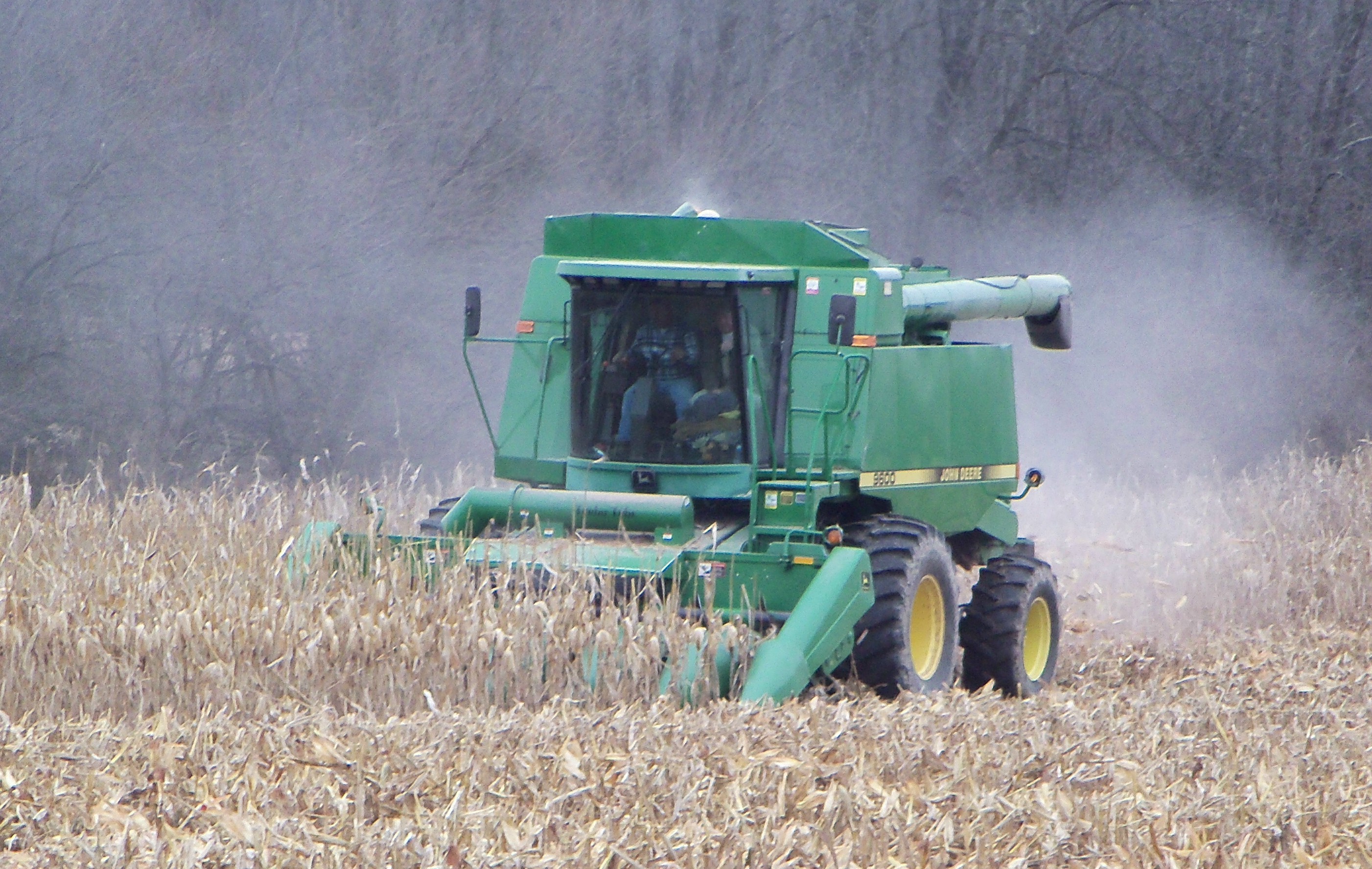My neighbor cares for his land, his family and his community. This year, he planted fields of corn and soybeans. For weeks, he had delayed his harvest: the ground too wet to drive farm machinery across it.
Late last week, the ground froze slightly. My neighbor hired a man with a combine that had tracks like a bulldozer to harvest corn. On Friday, he drove his machine into a field. As I watched, it slid sideways just slightly on the downhill through oozing mud, but it kept creeping along, its tracks gripping the surface of the soil. By early Sunday morning, the ground had frozen more solidly. My neighbor drove his own combine into the field near my house. It takes skill to know when, if and how one can cross such ground. Any dip in the land will harbor slippery clay. Ice may cover water, then oozy clay, then firm ground. What is frozen at sunrise will often thaw by midday.
His combine's big tires made deep ruts as it headed into a low section of the field. It stopped. I tensed, just watching. If he got stuck, he was done, for the day and for the season. This was the one day to harvest before temperatures warmed mid-week. More rain was predicted on Friday. The combine backed slightly and moved onto higher ground. For the next hour, it harvested corn.

As the full combine shot the corn out a shoot into the waiting truck, I approached my neighbor, “Why didn't you go down the center of the field first?” I asked. “Because we want to hit the sides when the combine is empty. Corn weighs 56 pounds per bushel. The combine will hold about 200 bushels. That's a lot of weight! “ He explained, then added, “Gotta get home now and unload some corn.”
He had hired two other operators with combines with tracks. The thrum of their heavy engines sounded all day; their headlights shone like giant flashlights facing the ground as the crescent moon hung serenely in a clear sky amid twinkling stars.
His wife called to ask me to keep my dog inside: he had hired help to spread manure starting at midnight. By law, he cannot spread liquid manure in winter—this year, the dates are December 16 through March 1--except with explicit emergency exemptions from Maryland's Nutrient Management Program. Their manure pit was already overflowing: they had not been able to get into the fields.
Next morning before day break, I saw two full-sized tractors, headlights blazing, towing manure spreaders the size of small tankers. Each sprayed a fan of brown liquid 30 feet wide across frosted ground. Steam rose from the field as vapor rises from a pond early morning. When the tanks were empty, these giants raced back to the pit for another load. They worked feverishly until about noon.
Monday night all was still: the crops were in; the manure spread. My neighbor had stretched to get this work done; he had compacted the soil as little as possible. Now he cannot plant cover crops to protect the soil this winter--the ground is again too wet, the sun too weak to germinate the seeds. Come spring, the cover crops will not provide organic matter to the fields. All winter, the ground will be exposed to greater erosion as rainfall moves across its surface rather than sinking into the soil.
I heard that the local farmer invested $60,000 to buy the tracks for his combine. He did not work for weeks because the fields were too wet even for his machine. The operators who make extra money spreading manure for other farmers worked through the night rather than lose that work. These small changes are cumulative: compacted soils create greater the run-off; greater run-off creates more flooding. The entire cycle leads to more expense and more intense work. The answer? Encourage and reward practices that restore health to the soils and our communities, a theme I will address in another essay.

